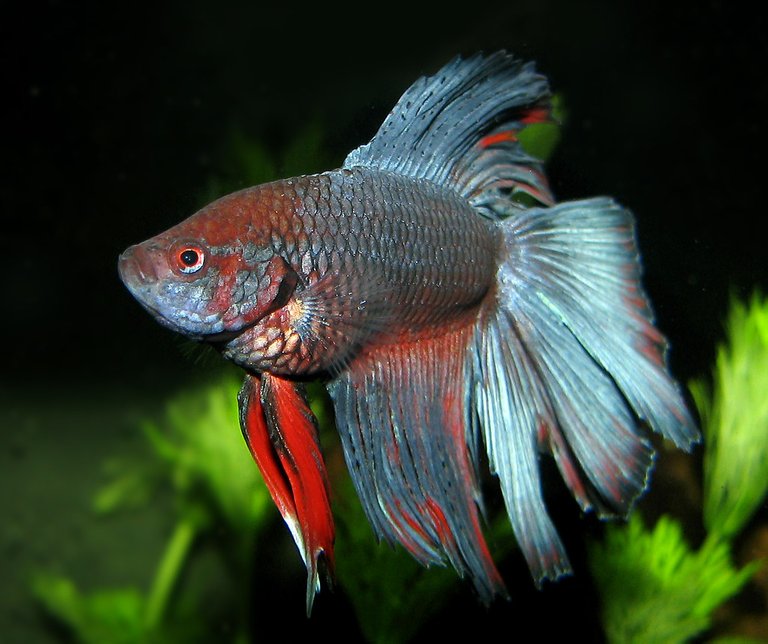Aeromonas spp; Another type of water borne infection
The demand for fish and fish products has significantly increased and this is basically because population growth has increased the preference for healthier foods. Aeromonas species are ubiquitous gram-negative microbes, that have a rod-shaped form, it is also common in freshwater and estuary environments. Different types of aquatic ecosystems are characterized by a wide range of Aeromonas spp., each of these species could be isolated from soil, water, meat, food, milk, raw milk, sausage, poultry, vegetables, shellfish, and fish.

flickr.com
Formerly, Aeromonas was positioned initially in the family of Vibrionaceae, but with a successive phylogenetic analysis, there is a point out that genus Aeromonas is not related to Vibrois, that resulted in the classical relocation of Aeromonas from the family Vibrionaceae into a new family AEROMONADACEAE. There are a lot of biochemical similarities between the Aeromonads and Enterobacteriaceae, but they can easily be differentiated through oxidase test and when this test is carried out, aeromonads produce a positive result while Enterobacteriaceae gives the opposite. In the term of the general classification, genus are divided characteristically into three different biochemical groups, we have the; Aeromonas hydrophila, Aeromonas caviae, and Aeromonas sobria
Aeromonas species are great causative agents of a wide range of diseases in animals and man, and according to some studies, Aeromonas species are becoming waterborne and food pathogens of great importance, they have been closely related to several food-borne outbreaks, and gradually, they are been isolated from patients who have traveler's diarrhea. As it stands currently, Aeromonas species have gotten the inherent capacity to grow in water distribution systems, especially in biofilms where they could be resistant to chlorination. In 1968, von Graevenitz and Mensch were able to review about 30 cases of Aeromonas infections or colonization, this created an awareness of the recognition of human pathogens as well as suggestions that some aeromonads could b associated with gastrointestinal diseases. Aeromonas species are often isolated from fecal samples of children who are younger than five years of age.

source
An environmental source of Aeromonas pathogen involved in a gastrointestinal infection was first reported by Holmberg and his coworkers. Environmental factors like salinity, PH, temperature, dissolved oxygen, and potentially bad management which includes overcrowding, overfeeding, and malnutrition in hatchery facilities cause stress amongst aquatic animals. Therefore making them more vulnerable to infectious diseases, on the other hand, the outbreak of natural diseases is sometimes observed in wild aquatic species as they usually coexist with pathogens until they become significant environmental changes. Another strong concern regarding Aeromonas infections is their potential resistance to drugs like penicillin, carbenicillin, cefazolin, and penicillin as they possess a minimum of three inducible chromosomal β-lactamases.
Some diseases are contracted through initial exposure to aquatic environments, and when this happens, the polymicrobial etiology of the infection has to be taken into consideration, especially concerning the presence of an unusual microorganism like Aeromonas. Aeromonas potentially generates varieties of skin and soft tissue disorders, in most cases, healthy people who have suffered previous injuries like trauma/burns or exposure to contaminated water.
Aeromonas septicemia has been shown in patients who have serious hepatic diseases, cancer, diabetes, immunosuppression, and leukemia due to other causes. The dissemination of the pathogen secondary to septicema could result in peritonitis, meningitis, pneumonia, or urinary tract. In patients, the source of infection is either gastrointestinal colonization or other colonized site from wound infection. Some varieties of other infections that are caused by Aeromonas spp, have been reported, they include; hepatobiliary infection, intraabdominal abscess, meningitis, urinary tract infection, bacterial peritonitis in patients who have cirrhosis, endocarditis, supportive thrombophlebitis, pneumonia, tonsillitis, otitis media, osteomyelitis as well as pneumonia.
The thing about most infections caused by Aeromonas spp* is that, they are gastrointestinal infections and they could be prevented easily through the maintenance of adequate sanitary conditions like hand hygiene, hygienic food preparation, and appropriate sewage disposal. When food is appropriately prepared, proper cooking will minimize transmission, and adequate disposal of diseased animals and water treatment can help prevent the spread of Aeromonas. With the continuous act of monitoring the quality of water, it is important to minimize the health risk as a result of Aeromonas.
As I have mentioned earlier, Aeromonas are found in lots of environmental waters and as a result, it was found in most sources of water used for drinking water production. The existing techniques that are used for the treatment and disinfection of water are effective in the level of minimization of Aeromonas in finished drinking water.
Conclusion.
Aeromonas infection has remained among the infectious diseases that pose serious threats to public health. The outbreak of Aeromonas disease has created a form of painful awareness of personal, societal, economic, and public health costs associated with the impact of contaminated water and consumption of undercooked food. The emergence of Aeromonas infections has been underestimated drastically in developing nations.
References.
https://www.hindawi.com/journals/tswj/2012/625023/
https://www.frontiersin.org/articles/10.3389/fmicb.2022.868890/full
https://bmcmicrobiol.biomedcentral.com/articles/10.1186/s12866-023-02827-8
https://www.ncbi.nlm.nih.gov/pmc/articles/PMC4785759/
https://www.sciencedirect.com/topics/agricultural-and-biological-sciences/aeromonas-hydrophila
Thanks for your contribution to the STEMsocial community. Feel free to join us on discord to get to know the rest of us!
Please consider delegating to the @stemsocial account (85% of the curation rewards are returned).
Thanks for including @stemsocial as a beneficiary, which gives you stronger support.
There are several water-borne infections that affects underdeveloped and developing countries, access to good water for human consumption will rescue so many lives from impending danger and eventual death.
I absolutely agree, having access to clean water will do a lot in maintaining citizen's health in underdeveloped countries.
Congratulations @busted1! You have completed the following achievement on the Hive blockchain And have been rewarded with New badge(s)
Your next target is to reach 4000 upvotes.
You can view your badges on your board and compare yourself to others in the Ranking
If you no longer want to receive notifications, reply to this comment with the word
STOPCheck out our last posts:
Support the HiveBuzz project. Vote for our proposal!